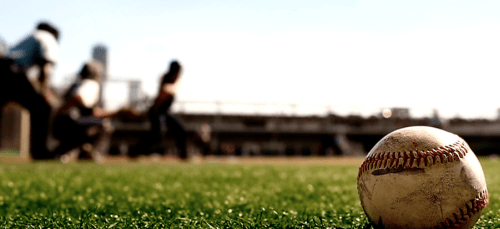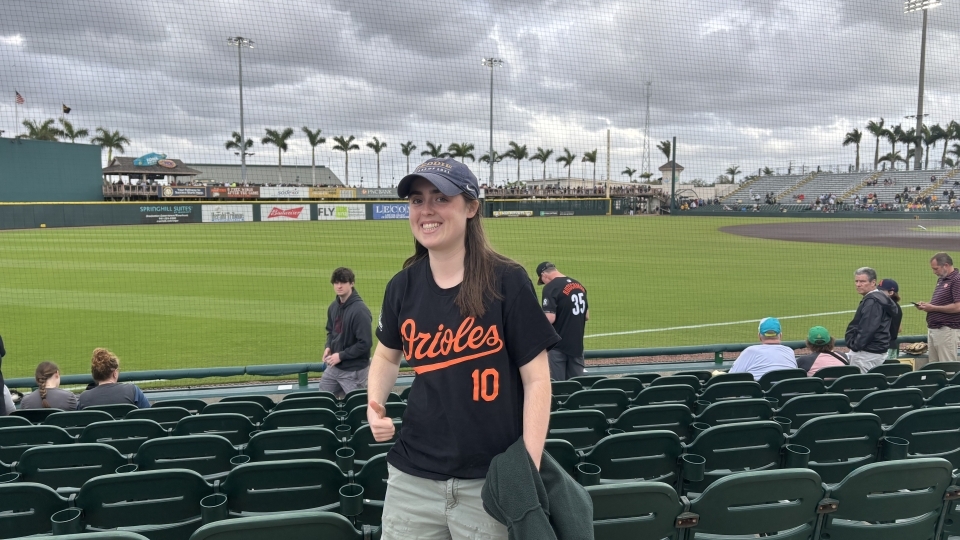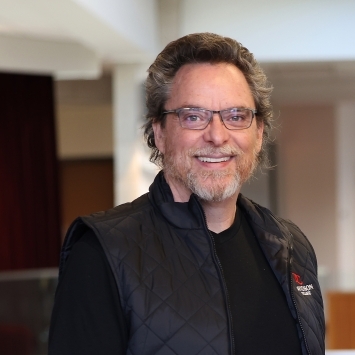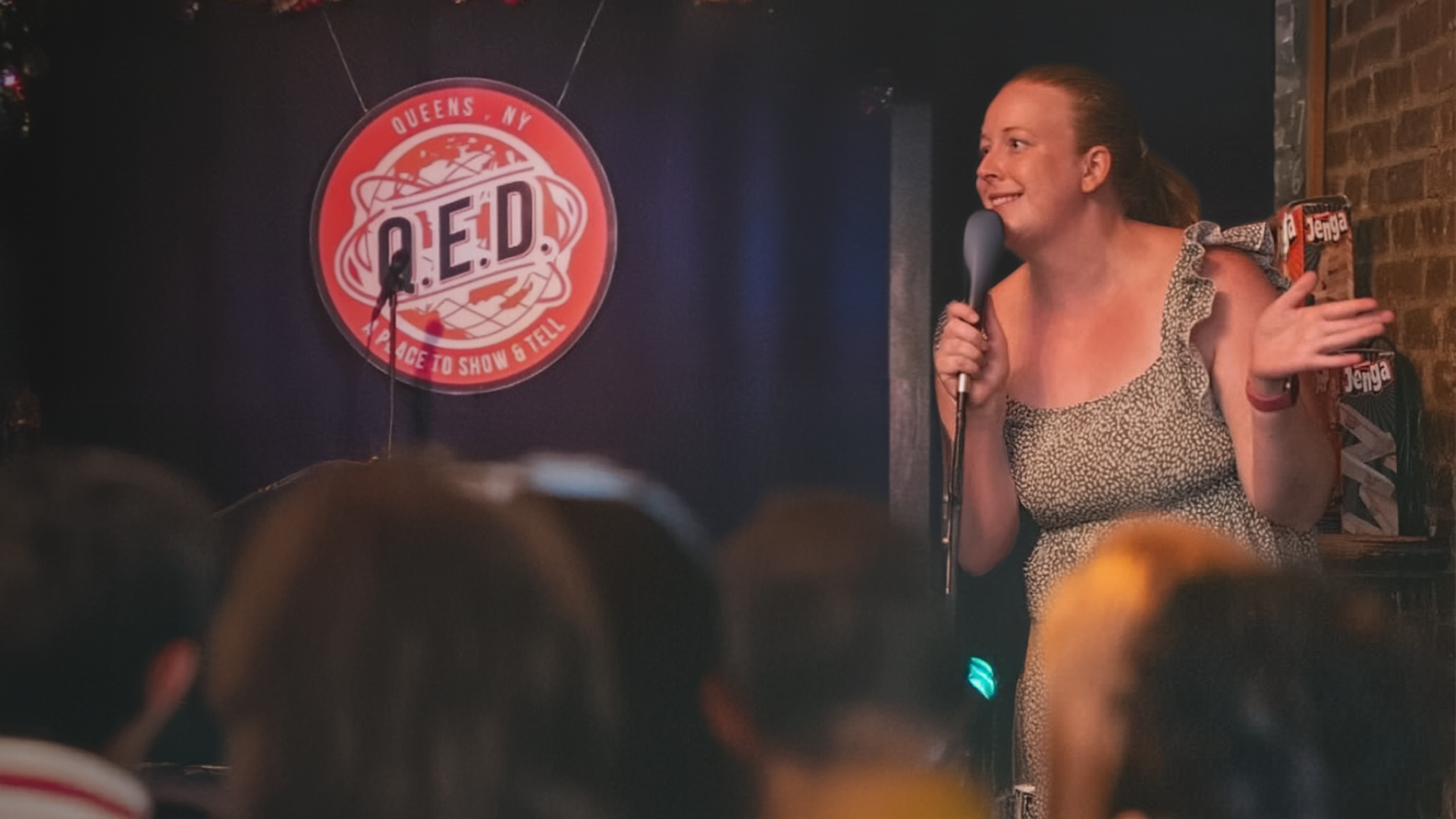
Math Major’s Thesis Hits the Big Leagues: Paige Pakenas ’25 Helps Orioles Batters Refine Their Swings
August 27, 2025
- Author
- Jay Pfeifer

When a major league baseball player steps to the plate, he brings with him the muscle memory of hundreds of thousands of swings. Hours, weeks, years devoted to the perfect swing, a symphony of joints and muscles firing in sequence.
And it all happens in the blink of an eye. A swing takes approximately 200 milliseconds.
That makes spotting changes in a batter’s swing quite difficult — especially in a motion as finely tuned as the stroke of a major leaguer.
But thanks to the research of a Davidson math major, the Baltimore Orioles have a new tool that helps them identify how their hitters’ swings change.
Paige Pakenas ’25, a math major who graduated in the spring, spent her senior year analyzing data supplied by the O’s, and one of her projects produced results that were so compelling the Orioles have incorporated it into daily operations.
A Stroke of Luck
As a junior, Pakenas knew she wanted to focus her thesis on applied math instead of more theoretical research, but how that would actually work was unclear. So she reached out to Math Professor Tim Chartier. Chartier is an expert on sports analytics and one of the founders of ’Cats Stats, the student-run data analytics organization that helps Wildcat teams use data.
“ I just had lunch with him one day and he started mentioning some of these teams he had worked with,” she said. “And when he mentioned the Orioles, I was like, ‘No way.’”
Pakenas grew up in Maryland, inheriting her father’s love for Baltimore’s major league baseball team. It just so happened that Chartier had deep connections at the O’s.
A couple of years ago, Orioles data scientist James Hull had contacted Chartier in search of some help tackling data analysis problems. Chartier connected a handful of math students with Hull for short-term projects. But Pakenas wanted to do an honors thesis, and that requires more work and more supervision than the projects Hull had headed up.
“I honestly didn't know if the Orioles were interested in doing something of that scale,” Chartier said. “ James immediately was like, ‘Yes, we will find something that works.’”
Hull sent three questions he hoped Pakenas could answer:
- Could she use data to detect variations in batters’ swings?
- Could she do the same to shake out pitchers’ motions?
- And could she develop a model that could predict pitcher fatigue?
An Eye For Detail
Much of the data Pakenas would analyze comes from Hawk-Eye Cameras that transform the action on the field into millions and millions of data points. Hawk-Eye is perhaps best known for powering the simulated tennis line calls that determine if a shot landed in or out. But the camera system has woven itself into most major sports. Every major league park (and many minor league fields as well) have installed a dozen Hawk-Eye cameras around the field. When baseball fans see a visualization of a strike painting the outside corner, Hawk-Eye cameras make that possible.
Hawk-Eye cameras watch the players, too. When a batter steps to the plate, the all-seeing system records the movement of over 30 joints and the bat itself. Roughly speaking, Hawk-Eye transforms a batter into a “stick figure,” showing the movement of almost every part of the batter’s body.
“We have a bunch of data points about a player's swing that we track for every pitch,” Hull said. “Given a large enough time window, we asked Paige to try to detect changes for an individual.
“Downstream, these changes would impact our projected value of the player, how we might view their strengths and weaknesses, and defensive positioning models.”
Hull sent Pakenas data from thousands of at-bats for players across the Major and Minor league, charging her to find extremely subtle variations in swings.
“At this level of baseball, these players are machine-like,” Pakenas said. “Their swing has been broken down to every little detail and perfected. So we don't really expect this swing to change very much. But if they do change, that could be an indication that something's happening behind the scenes. Whether it's a potential injury that's developing or a purposeful change or something else.”
Pakenas’s progress, at first, was slow. No one actually knew if her research would pan out.
“When you work on a data analysis project like that, you don't know whether you're going to get any meaningful results,” said Mathematics and Computer Science Professor Carl Yerger, who co-advised Pakenas’s thesis.

She was very comfortable going through periods of being lost. She could work diligently on the problem without knowing what end we would reach. An honors thesis must feature original research where it does not have a known outcome. You have to produce insight or you don't have honors.
Joseph R. Morton Professor of Mathematics and Computer Science
After a couple months of wind-up, Pakenas’s algorithm started to produce results.
“I came into Professor Chartier’s office one day and said, ‘My algorithm picked up something.’”
Pakenas had access to video of every swing, so she queued up the swings in question on a TV in Chartier’s office.
“She showed me one, then she showed me the other one with the change in swing, and I literally just turned to her and said, ‘I have no idea,’” Chartier said.
Pakenas couldn’t see it either. But the data was clear.
So, they reached out to the experts.
“We contacted the Orioles and James was like, ‘Oh yeah, there's a change in those swings,’” Chartier said.
Pakenas had figured it out. She continued tuning and polishing the project so she could turn it over to the Orioles. Pakenas’s algorithm is now part of the team’s day-to-day operations.
“We are flagging batters who are experiencing these ‘changes’ and passing that information along to scouts and analysts for further review,” Hull said.
Expanding Research
Pakenas moved on to the next challenge — using the same “change-point detection” method to pick out pitchers’ movements. But it turns out that pitching is entirely different from batting.
“The results for pitchers were catastrophic,” Pakenas said. “There was a change point in every single pitch.
“We don't expect batters to change their swing. But if I take a pitcher, and they throw 80 pitches in a game, their motion is going to change throughout the course of the game because they fatigue.”
Of course, in research, determining that a method is a dead-end is nearly as useful as a positive finding. Pakenas moved on to the last question, which built on the flaw that undermined her pitcher analysis: Pitchers get tired.
“The decision of when to pull them out [of a game] is gut instinct,” Pakenas said. “Intuition's good. But it would also be helpful if I had some tool that helped me make this decision.”
Hull: “The question was could we identify how "fatigued" a pitcher was/felt based on just biometric data? Which metrics do we expect to change throughout a game?”
Pakenas built a predictive model based on data like hip-shoulder separation — again, measured by Hawk-Eye cameras — that can give the coaching staff a sense of how tired their pitcher might be. In addition to biomechanical data, Pakenas’s model even incorporated factors like whether the team was playing home or away, days of rest and how far into the season the pitcher might be.
The model was less conclusive than her research on batters but still proved valuable to Hull and his team.
“The biggest surprise was just how different pitchers are when it comes to their fatigue markers,” Hull said. “Despite all measuring the same metrics, they change at very different rates per pitcher. It leads us to think there is no ‘one-size-fits-all’ fatigue model.
High Honors
In late April, Pakenas presented the results of these projects to the Math faculty and — no surprise — earned high honors. She drew high praise from her faculty and especially from Hull.
“Paige's work was exceptional,” he said. “Not only the results, but I was incredibly impressed with her dedication, independence, and clear, straightforward style of work and communication. I felt like every meeting I said to her, ‘You're further along than I thought, this is great!’”
Over spring break, as she put the finishing touches on her thesis, Pakenas visited her parents in Florida. They happened to live close to the Orioles’ spring-training facility, so she caught a game with her dad. And as she sat in the stands, it started to sink in that her thesis was in some way shaping the performance of the team she and her dad had supported for decades.
“I knew I wanted to do a thesis, but getting to combine that with actual real-life implementation and see how it's actually helping a team that I want to win,” she said, “it’s amazing.”



